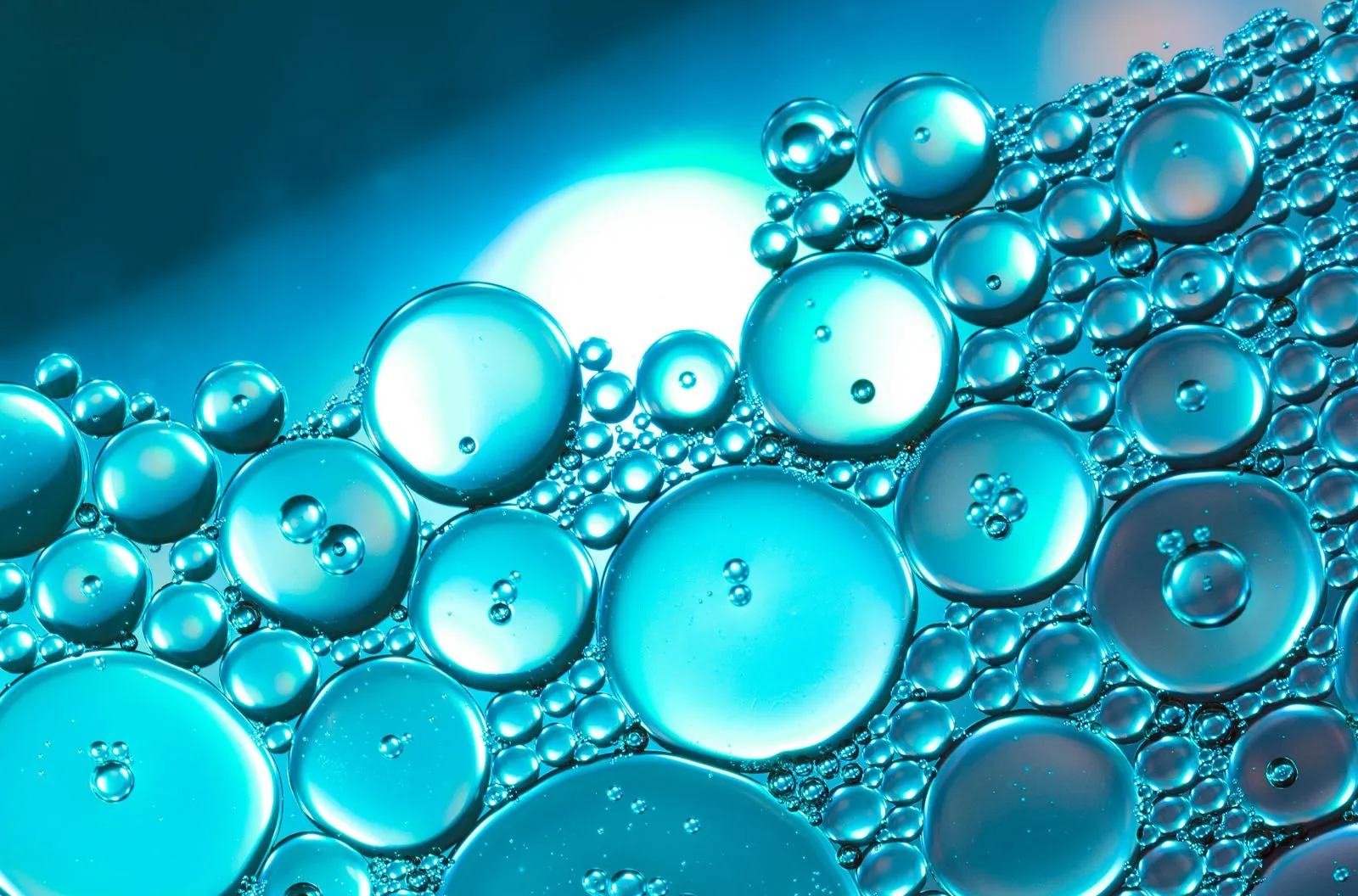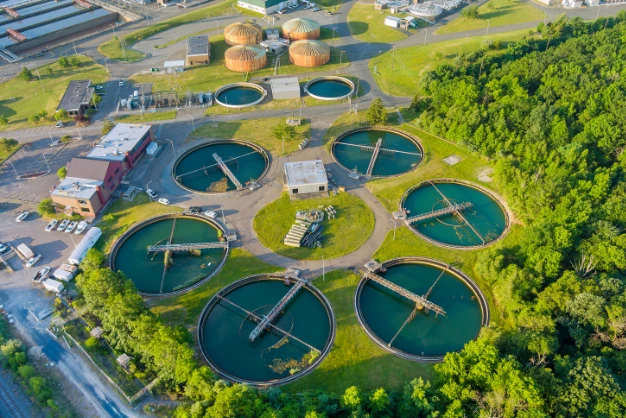Foam in water treatment disrupts operations, reduces efficiency, damages equipment, and causes regulatory non-compliance. Effective foam control is crucial for smooth operation and water quality.
Foam in water treatment systems arises from various factors
Organic Matter: Decomposing organic material releases gases, contributing to foam formation.
Surfactants: Detergents and cleaning agents lower water surface tension, creating foam.
Biological Activity: Microbial activity, especially in aeration tanks, produces foam as a byproduct.
Mechanical Agitation: Mixing and aeration processes introduce air into the water, generating foam.
Foam can significantly hinder water treatment processes
Oxygen Transfer: Foam blocks oxygen transfer, affecting biological treatment efficiency.
Filter Clogging: Foam can clog filters, reducing their effectiveness and increasing maintenance needs.
Overflow Issues: Excessive foam can cause overflow, leading to spillage and operational disruptions.
Municipal Wastewater: High organic loads and surfactants lead to persistent foam problems, affecting the overall treatment process.
Food Processing: Residual fats, oils, and proteins in wastewater create stable foam, which complicates the treatment process and requires more frequent maintenance.
Paper Manufacturing: Pulp and paper processes generate foam from fiber particles and surfactants, leading to operational challenges and increased chemical usage.
Using a water treatment defoamer helps manage foam issues, ensuring efficient operation and protecting equipment across these sectors. By breaking down and preventing foam formation, defoamers enhance the overall efficiency of water treatment systems, reduce maintenance costs, and improve the quality of the treated water.
Advantages: High efficiency, low dosage requirements, stable performance across a wide pH range, and effective in both hot and cold water.
Disadvantages: Potential for silicone buildup in the system, higher cost compared to non-silicone alternatives.
Non-silicone-based defoamers include oil-based, water-based, and surfactant-based formulations. These defoamers use natural or synthetic oils, fatty acids, and other organic compounds to control foam.
Advantages: Biodegradable, less likely to cause buildup, often more cost-effective.
Disadvantages: May require higher dosages, potentially less effective in severe foaming conditions, performance can be affected by water chemistry.
Silicone-based defoamers are generally more effective and require lower dosages, making them suitable for challenging foaming conditions. However, non-silicone-based defoamers are preferred in applications where biodegradability and environmental considerations are important. Choosing the right water treatment defoamer depends on specific system requirements, environmental impact, and cost considerations.
In municipal water treatment plants, defoamers are essential for managing foam during various stages of the treatment process, including aeration and sedimentation. Foam can disrupt operations and reduce efficiency, making a water treatment defoamer crucial for maintaining smooth operation and ensuring high-quality treated water.
Foam in cooling towers and boiler systems can cause significant operational issues, including reduced heat transfer efficiency and increased risk of overflow. Using defoamers in these systems helps maintain optimal performance, extends equipment life, and ensures reliable operation.
By utilizing the appropriate water treatment defoamer, different sectors can achieve better operational efficiency, cost savings, and compliance with regulatory standards.
Selecting the right water treatment defoamer requires evaluating several factors
Type of Foam: Identify whether the foam is stable or transient, as this impacts the choice of defoamer.
Water Chemistry: Consider the pH, temperature, and presence of other chemicals in the water.
System Conditions: Assess the specific operational conditions, including agitation and aeration levels.
Evaluate the environmental impact and safety profile of the defoamer. Opt for biodegradable options where possible to minimize environmental harm and comply with regulations.
Balance the cost of the defoamer with its efficiency. High-performance defoamers may have a higher upfront cost but can lead to long-term savings through improved process efficiency and reduced maintenance needs.
By carefully considering these factors, you can select the most effective and sustainable water treatment defoamer for your specific needs.
Proper application of a water treatment defoamer ensures optimal foam control. Add the defoamer at a point in the system where it can be thoroughly mixed with the water to maximize its effectiveness.
Dosage rates vary depending on the type and severity of foam. Start with the manufacturer’s recommended dosage and adjust as necessary. Common methods of application include direct addition to the foam-prone area, using metering pumps for continuous dosing, and manual dosing for smaller systems.
Regularly monitor foam levels and system performance to determine if dosage adjustments are needed. Observing foam behavior and consulting with the defoamer supplier can help fine-tune the dosage for the best results.
Persistent Foam: If foam persists, increase the dosage gradually until control is achieved.
Incompatibility Issues: Ensure the defoamer is compatible with other treatment chemicals to avoid performance issues.
Environmental Concerns: Choose a defoamer with low environmental impact to comply with regulations and minimize harm.
Using these guidelines, you can effectively implement and dose a water treatment defoamer to maintain efficient and trouble-free operations.
Defoamers help prevent foam-related damage to equipment, such as pumps and filters. By reducing foam, they extend the lifespan of equipment and reduce maintenance costs, safeguarding the infrastructure of the water treatment facility.
Effective foam control improves the quality of treated water by preventing contaminants from being trapped in foam. This results in clearer, cleaner water that meets regulatory standards and customer expectations.
Using environmentally friendly defoamers ensures compliance with environmental regulations. Defoamers that are biodegradable and non-toxic help facilities meet legal requirements and reduce their environmental impact.
Implementing a water treatment defoamer provides these key benefits, enhancing the overall efficiency, safety, and sustainability of water treatment processes.



